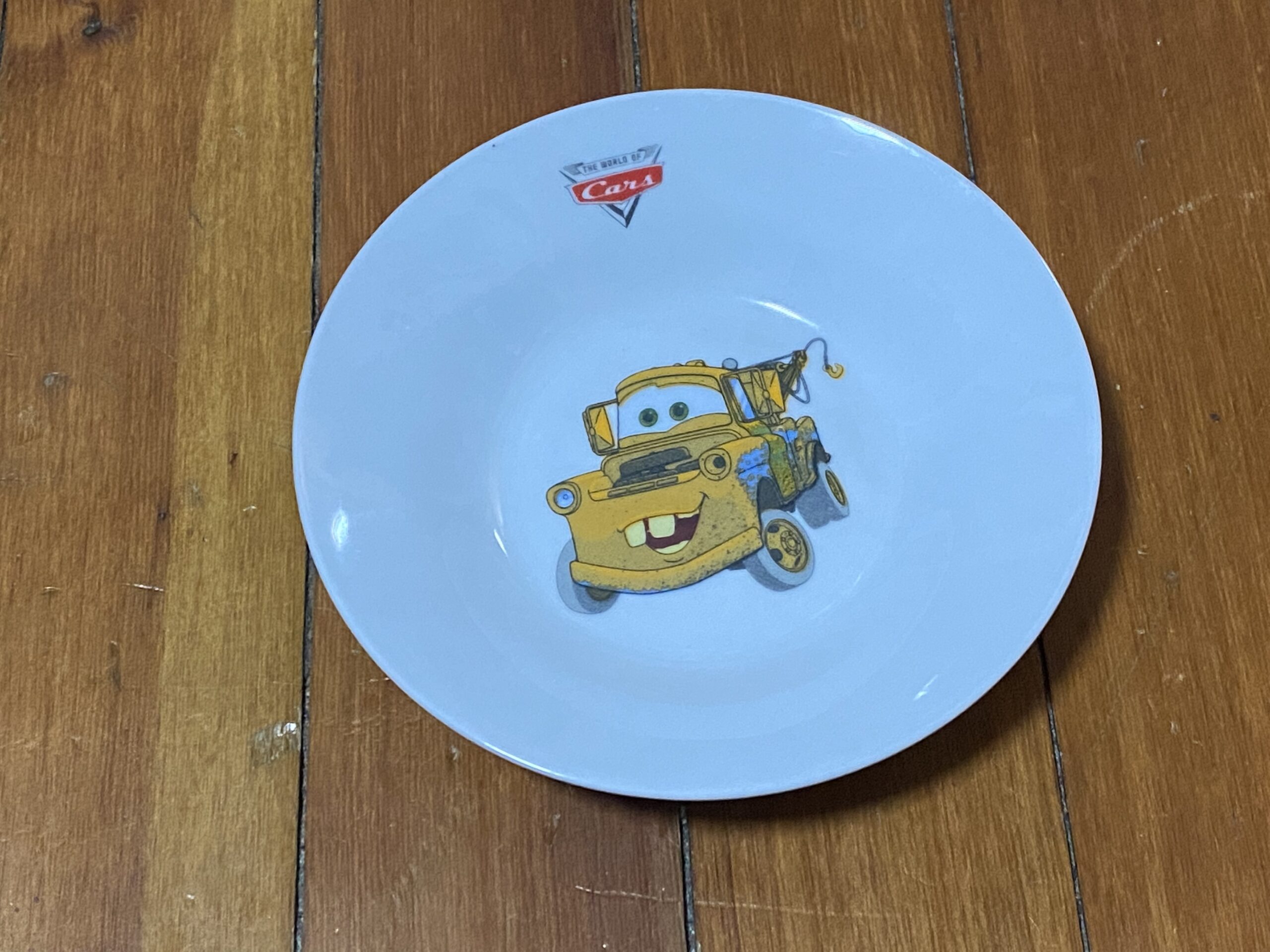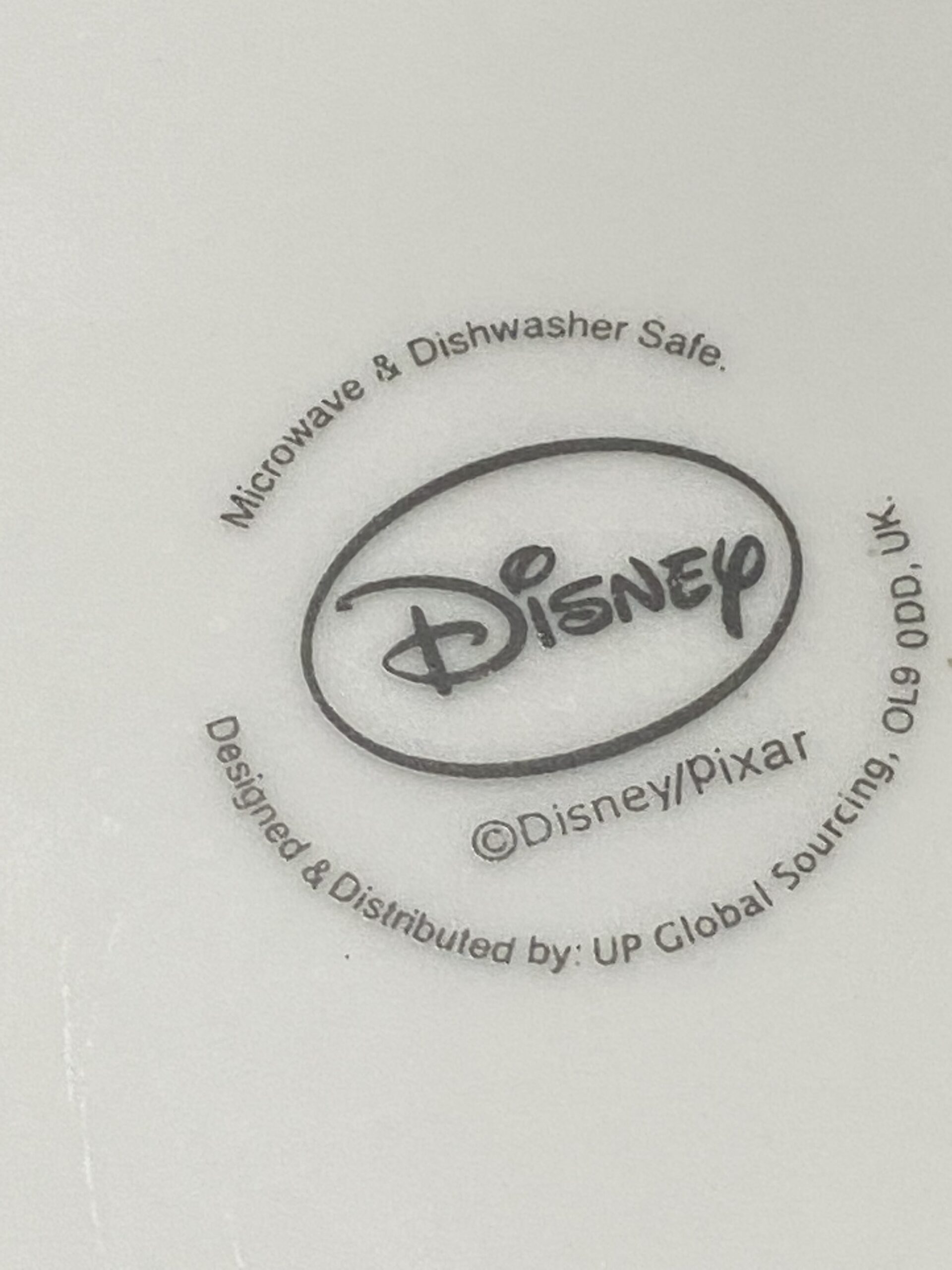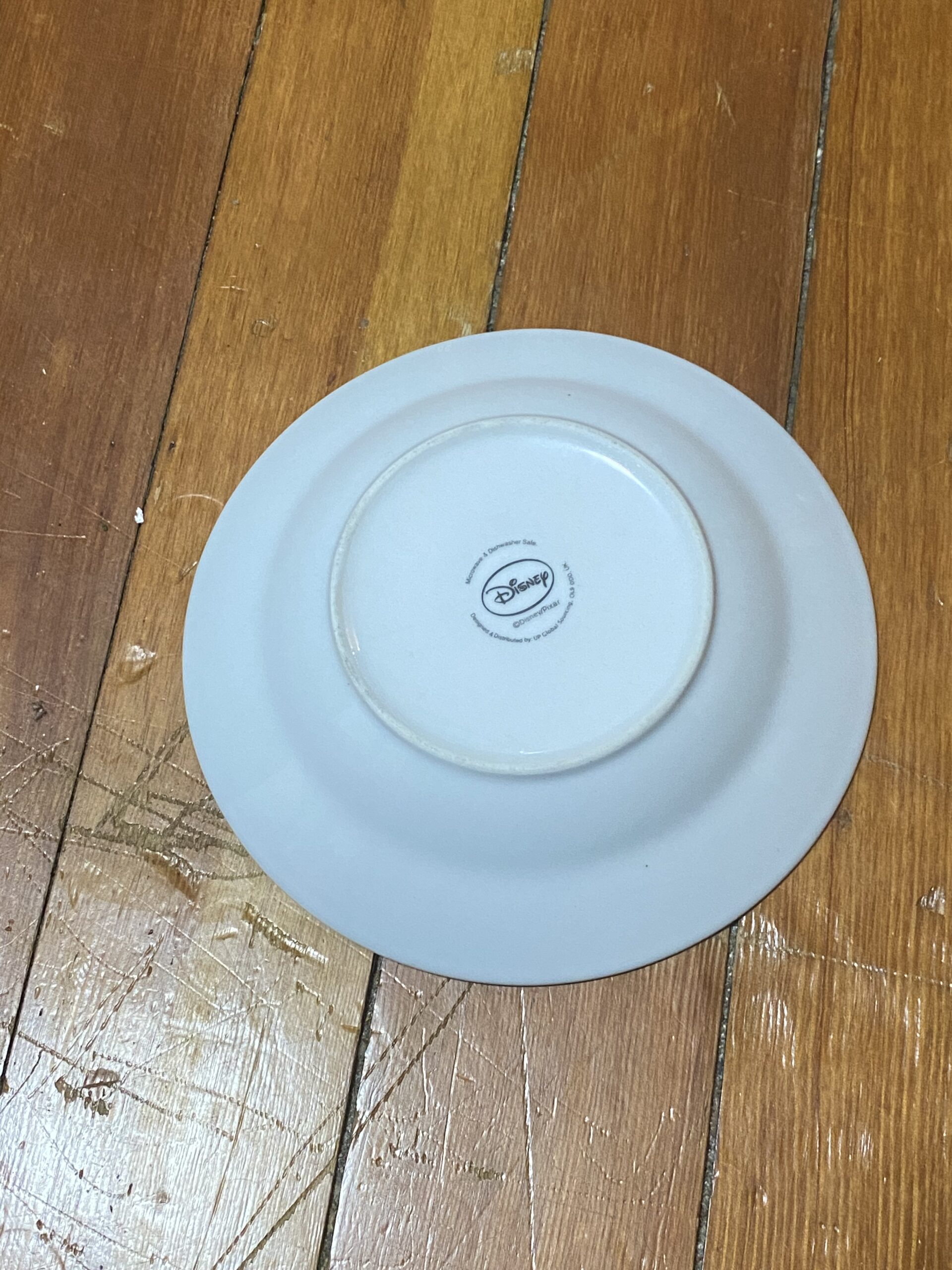Disney Pixar The World of Cars “Mater” cereal bowl (obviously made for children!): 20,100 ppm Lead (90 ppm Lead & up is illegal in modern children’s items)
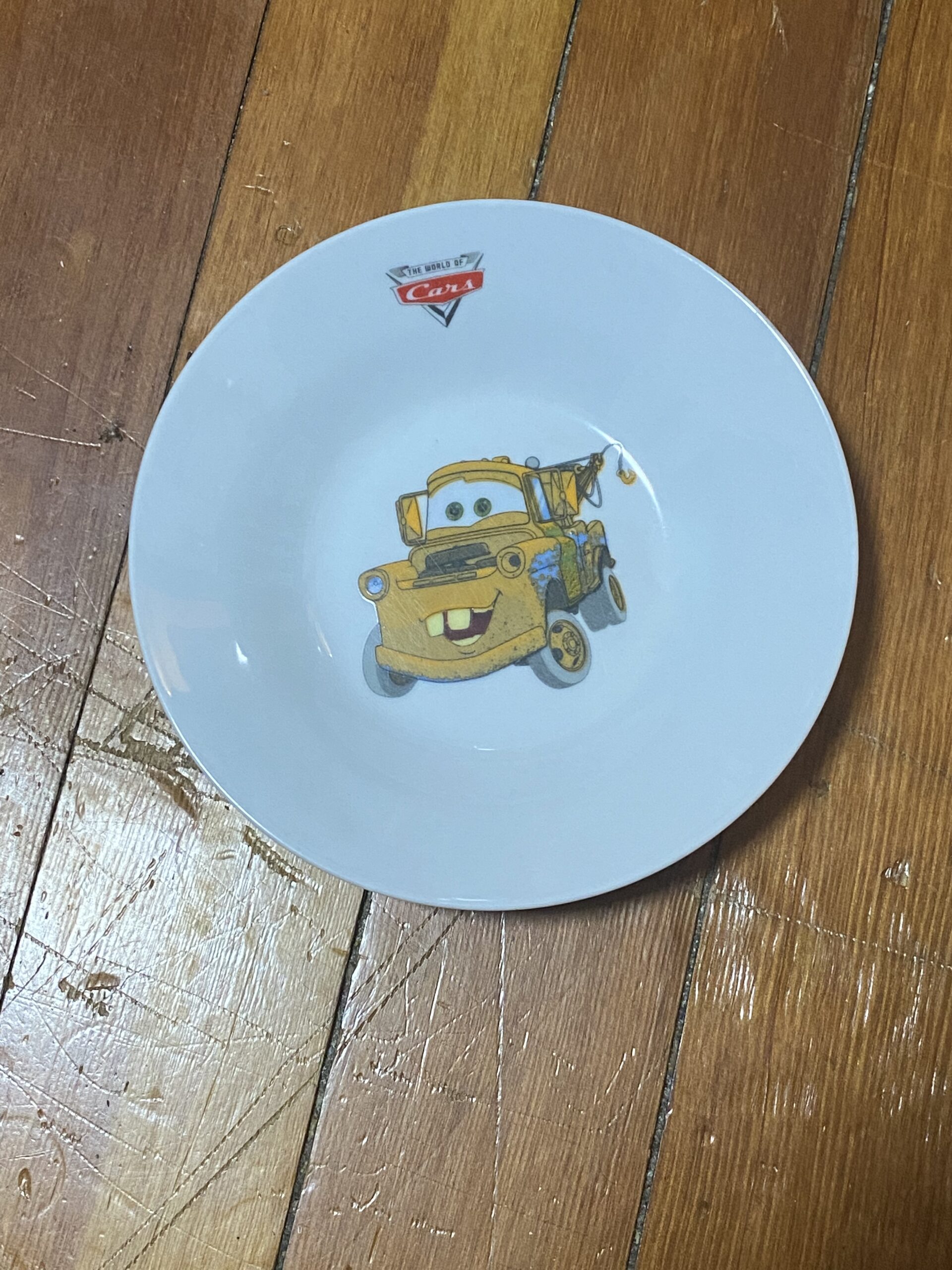
July 17, 2022 — Sunday
The movie “Cars” came out in 2006. While — to some of us this may seem like “just yesterday” — 2006 was two years before the Consumer Product Safety Improvement Act was passed in 2008, a law that mandated the paint, glaze, or coating of an item sold with the express intention of being used by children does not exceed Lead levels of 90 parts per million (90 ppm). So, while the decorative design of this Disney Pixar “Cars” Mater bowl tested positive for 20,100 ppm Lead — more than 220 times the regulatory limit set in 2008 — IF this was manufactured around the time the movie came out, it was not (yet) illegal in any way.
To my knowledge, no recall was ever made for this product. Unfortunately, no year of manufacture is noted on the product itself, so a little more research needs to be done to confirm if it was manufactured in 2006.
Since 2006 is only 16 years ago at this point, and since it is very likely that a dish like this may still be in service in people’s homes today — that, specifically, families may be using it now to feed their children, AND since it was made by a very high-profile brand (Disney) — I am going to submit a report to the CPSC requesting that a recall for this (and any related dishes from this set) should be issued. (I don’t expect the CPSC will issue a recall for a 16-year-old product, but it cannot hurt to submit a form, just in case they will and in the hope that a formal/ official recall notice might protect children from potential harm from these dishes in the future.)
Some additional reading that may be of interest
- An article discussing why the fact that this bowl is painted with a Leaded glaze is concerning.
- A link to an article discussing a 2017 study from England demonstrating the potential for harm to be caused by Leaded decorative elements on dishware.
- The “Disney” category of articles here on this website.
Full XRF test results for the “Mater” bowl pictured:
- Lead (Pb): 20,100 +/- 400 ppm
- Cadmium (Cd): 547 +/- 20 ppm
- Tin (Sn): 49 +/- 10 ppm
- Mercury (Hg): non-detect
- Selenium (Se): non-detect
- Barium (Ba): non-detect
- Chromium (Cr): 661 +/- 261 ppm
- Antimony (Sb): non-detect
- Copper (Cu): 53 +/- 23 ppm
- Zinc (Zn): 1,081 +/- 51 ppm
- Manganese (Mn): 365 +/- 159 ppm
- Iron (Fe): 1,394 +/- 139 ppm
- Platinum (Pt): 335 +/- 72 ppm
- Cobalt (Co): 1,119 +/- 95 ppm
- No other metals were detected in consumer goods mode.
For those new to this website:
Tamara Rubin is a multiple-federal-award-winning independent advocate for childhood Lead-poisoning prevention and consumer goods safety, and a documentary filmmaker. She is also a mother of Lead-poisoned children (two of her sons were acutely Lead-poisoned in 2005). Since 2009, Tamara has been using XRF technology (a scientific method used by the U.S. Consumer Product Safety Commission) to test consumer goods for toxicants (specifically heavy metals — including Lead, Cadmium, Mercury, Antimony, and Arsenic). All test results reported on this website are science-based, accurate, and replicable. Items are tested multiple times to confirm the results for each component. Tamara’s work was featured in Consumer Reports Magazine in February of 2023 (March 2023 print edition).
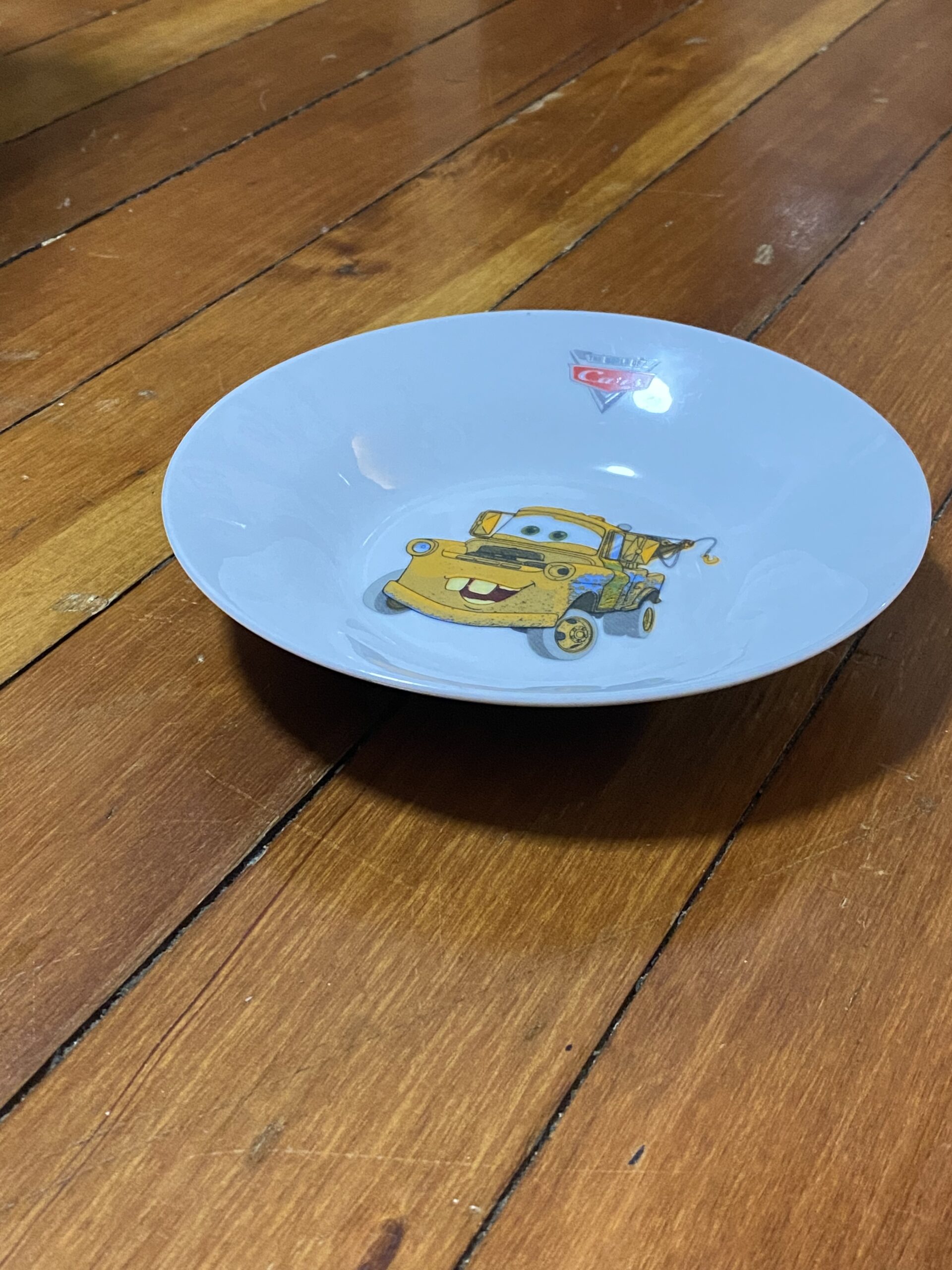
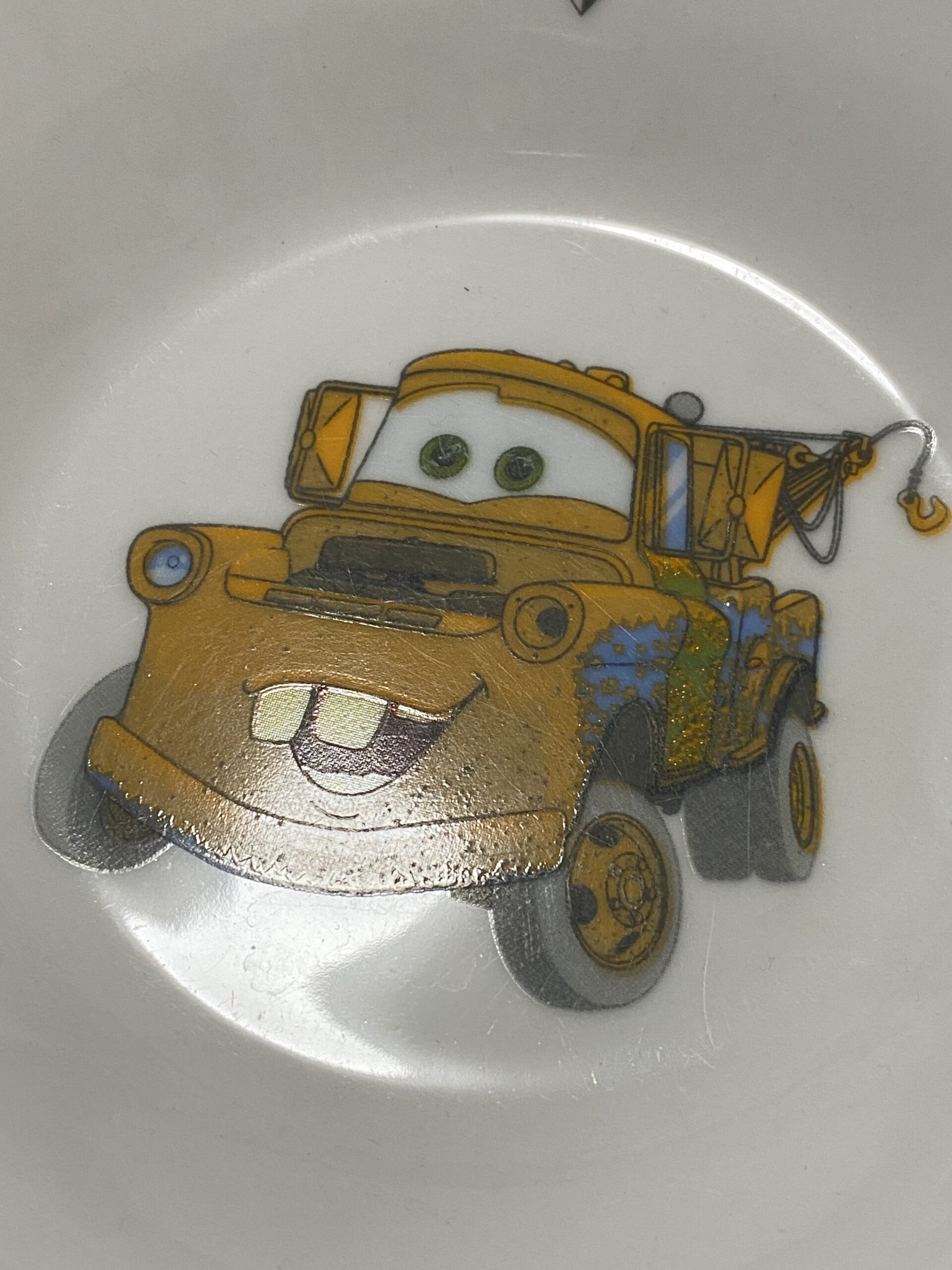

Never Miss an Important Article Again!
Join our Email List



